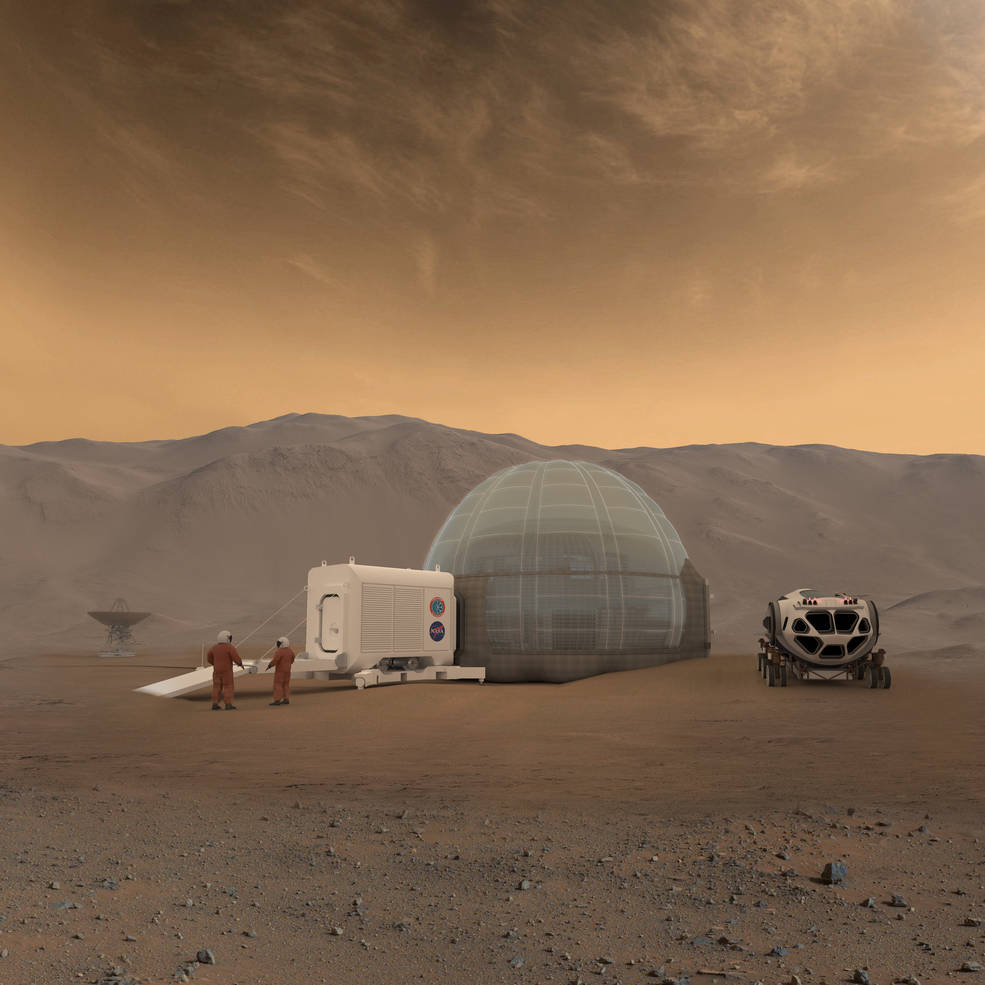SpaceX’s Elon Musk may imagine a nuclear device acting as an artificial sun on Mars for his long-term terraforming plans, but NASA has ultimately disagreed with his and others’ proposals thus far for the planet. With this in mind, Harvard University scientists have conducted a study using silica aerogel to create regionally terraformed parts of the planet instead. Their results were recently published in Nature Astronomy.
NASA’s message is clear: The amount of carbon dioxide (CO2) that would be required to warm Mars enough to provide the required atmospheric pressure for human survival is not present on the red planet.
“Transforming the inhospitable Martian environment into a place astronauts could explore without life support is not possible without technology well beyond today’s capabilities,” NASA concluded in a press release last year on the topic of making our neighbor into the next Earth. “Our results suggest that there is not enough CO2 (carbon dioxide) remaining on Mars to provide significant greenhouse warming were the gas to be put into the atmosphere; in addition, most of the CO2 gas is not accessible and could not be readily mobilized. As a result, terraforming Mars is not possible using present-day technology.”

The Harvard scientists who published the recent study have instead proposed a way around this problem by exchanging a planet-wide terraforming strategy for a local one. By covering certain areas of the Martian surface with a thin layer of silica aerogel, namely areas with large amounts of water ice, enough sunlight will come through for warming and combine with natural heating processes beneath the surface to create a potentially habitable environment.
“Specifically, we demonstrate via experiments and modelling that under Martian environmental conditions, a 2–3 cm-thick layer of silica aerogel will simultaneously transmit sufficient visible light for photosynthesis, block hazardous ultraviolet radiation and raise temperatures underneath it permanently to above the melting point of water, without the need for any internal heat source,” the study’s abstract detailed.

Once temperatures were adequate, the gases released from the ice in the lakes and regolith (soil) would build up to form a pressurized atmosphere under the aerogel layer. If successful up to that point, microbes and plant life could theoretically survive. “Placing silica aerogel shields over sufficiently ice-rich regions of the Martian surface could therefore allow photosynthetic life to survive there with minimal subsequent intervention,” the scientists suggested. This photosynthetic life would go on to produce oxygen for pickier Earth dwellers to utilize.
In addition to proposing the utilization of silica aerogel’s heat trapping properties, the research team also conducted tests using environmental factors that mimicked those on Mars. Their results thus far indicate that warming beyond the required temperature for liquid water would be readily available to implement as needed under the aerogel. These results are promising, but many more tests and in-situ research will also be necessary to prove the concept further.

While NASA’s findings published last year seem to dash SpaceX’s dream of eventually terraforming Mars (for the full picture, see their transforming coffee mug), this latest effort demonstrates that all options are not yet off the table. Perhaps if the Harvard team’s further studies and tests positively demonstrate the potential of their silica aerogel habitat idea, small regions throughout the planet could resemble Earth’s most ideal places – very similar to Earth itself.
Would these areas be akin to bubble cities and bubble parks? Would the aerogel cover geodesic structures, as is seen in many other Martian colony concepts? Even if all the answers aren’t in yet, the enthusiasm for finding answers is exciting.
<!–
–>
var disqus_shortname = «teslarati»;
var disqus_title = «Terraforming Mars may still be possible after NASA concludes otherwise, scientists say»;
var disqus_url = «https://www.teslarati.com/terraforming-mars-is-still-possible-despite-nasa-scientists/»;
var disqus_identifier = «teslarati-109711»;


